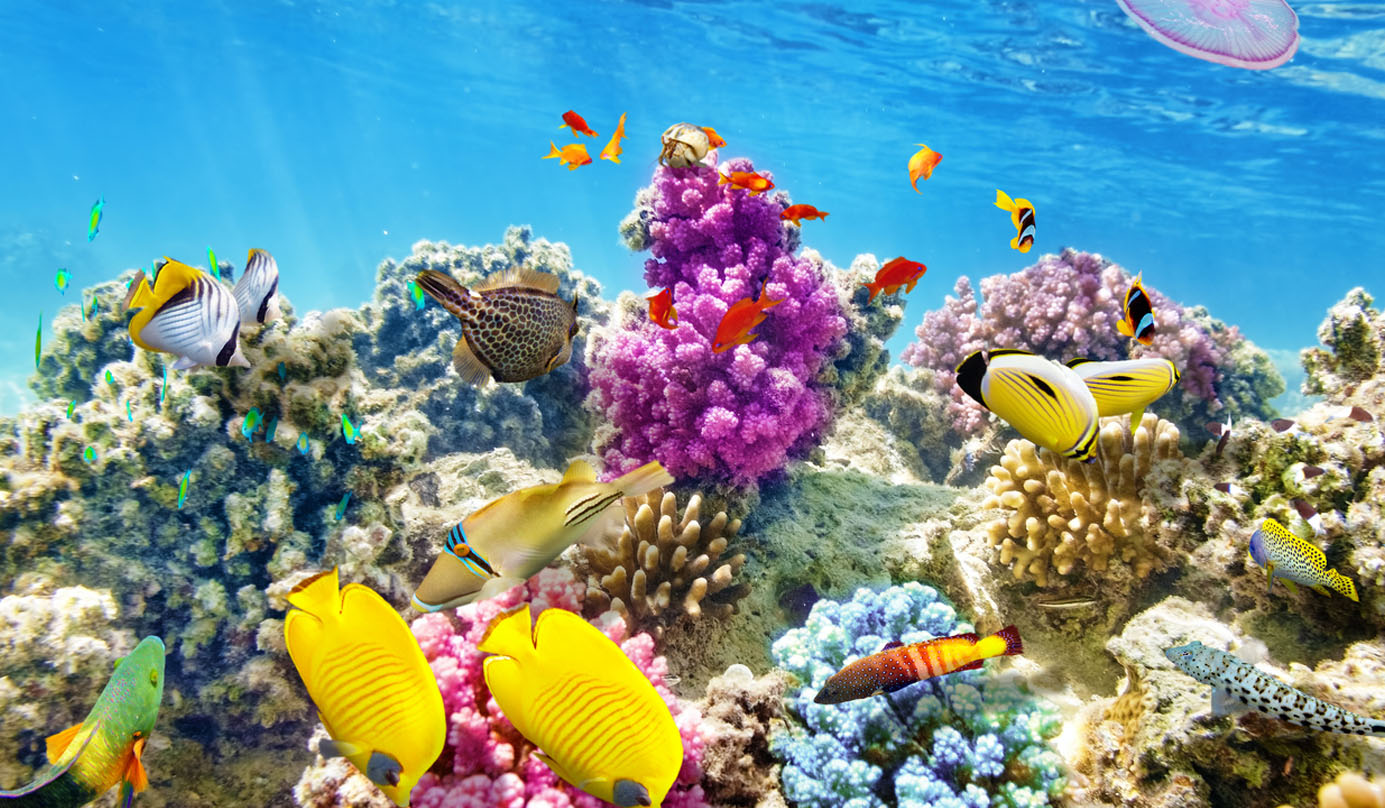
Not all biomes are on land. In fact, one of the most interesting ecosystems can be found underwater.

Coral reefs are some of the most beautiful ecosystems on Earth. Coral reefs are in shallow ocean water. They get lots of sunlight. There can be thousands of plants and animals in one coral reef.

Coral reefs get their name from the coral on the ocean floor. Corals might look like plants or rocks, but they are neither. They are actually animals. Yes, coral is living. They have a kind of skeleton. Around coral, you can find all kinds of animals. You might see jellyfish, crabs, sea stars, turtles, dolphins, sharks and many more!

Alongside coral, you can find anemones in reefs. They attach themselves to hard surfaces. They are soft and filled with water. They move in the water and wait for prey to pass by.

All living things need to eat. Coral is no different. Coral reefs rely on ocean currents. The tide helps keep coral reefs alive. As the tide comes in, it carries plankton to the coral. The coral catch and eat the plankton when it is brought by the tide.

The Great Barrier Reef in Australia is the biggest coral reef in the world. It is bigger than the UK, Switzerland, and Holland combined. It is so big that it can be seen from space. It is made up of almost 3,000 small reefs.

The Great Barrier Reef is full of life. There are 600 types of coral. There are 1625 types of fish. There are 133 types of sharks and rays.

There are not many coral reefs on Earth. Coral reefs only cover 0.1% of all the world’s oceans. But they are actually home to 25% of all ocean life. Lots of marine life relies on coral reefs.

But coral reefs are not just useful for animals. They also protect coastlines. The reef acts as a barrier. It protects the land from waves and storms. Without reefs, people living on the coast could be in danger.

Like lots of ecosystems, reefs are damaged by climate change. When water gets too warm or cold, coral releases algae. The algae is needed by the coral for photosynthesis. Without it, the coral turns white. It is called coral bleaching.

The coral does not die, but it becomes very weak. It cannot grow. It cannot reproduce. It gets diseases. Severe bleaching can lead to death.

In the last 30 years, over 50% of the world's coral reefs have been destroyed. Climate change, pollution, and overfishing are responsible. We must act now. What can you do to make a change?